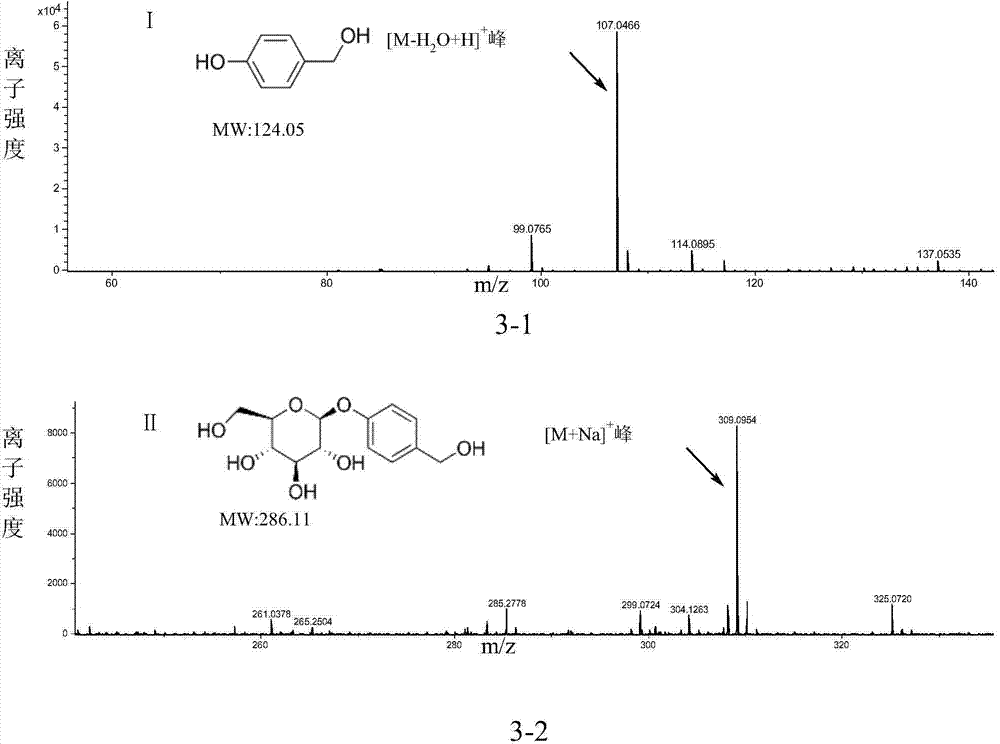Recombinant escherichia coli for utilizing glucose to produce p-hydroxybenzyl alcohol or gastrodin and application
A technology of recombinant Escherichia coli and p-hydroxybenzyl alcohol, applied in the field of bioengineering, can solve the problems of low titer, long reaction cycle of plant tissue culture, environmental damage of heavy metal catalysts, etc., and achieve the effect of increasing production
- Summary
- Abstract
- Description
- Claims
- Application Information
AI Technical Summary
Problems solved by technology
Method used
Image
Examples
Embodiment 1
[0053] The Escherichia coli expression vector is pCDFDuet-aroG*-ppsA-pgm-galU, and the preparation method of the vector preferably comprises the following steps:
[0054] (a) With reference to Chinese patent (patent application number: 201410115011.4.), Bi Huiping, Bai Yanfen, etc., a high-yielding E. coli expression strain of tyrosol and / or salidroside and icariside D2 and its application, the plasmid pBbA5c -tyrA*-aroG*-ppsA was used as a template, digested with PstI and AflII, and then ligated into plasmid pCDFDuet-1 digested with PstI and AflII to obtain plasmid pCDFDuet-aroG*-ppsA.
[0055] (b) Using the Escherichia coli BL21 (DE3) genome as a template, with primers pgm-5FPFseI (SEQ ID No: 6) / pgm-3RFPAatII (SEQ ID No: 7) / galU-5FPBamHI (SEQ ID No: 8) / galU -3RPXhoI (SEQ ID No: 9) was amplified by primers to obtain pgm and galU fragments, and the pgm fragment was double-cut with FseI / AatII and ligated into the vector pCDFDuet to obtain the Escherichia coli expression vector ...
Embodiment 2
[0058] Escherichia coli expression vector is pETDuet-ubiC-CAR-Sfp, Escherichia coli expression vector pETDuet-ubiC-CAR-Sfp-ugt73b6, Escherichia coli expression vector pETDuet-ubiC-CAR-Sfp-ugt73b6 FS The gene preparation method preferably comprises the following steps:
[0059] (a) According to literature reports, design a suitable restriction enzyme site, optimize the synthesis of the codon-optimized CAR-Sfp gene from Shanghai Jierui Bioengineering Co., Ltd., and digest the synthetic fragment with EcoRI and PstI, and then ligate it into EcoRI and PstI From the digested plasmid pETDuet, the plasmid pETDuet-CAR-Sfp was constructed.
[0060] (b) Using primer ubiC-5FPNdeI (SEQ ID No: 10) / ubiC-3RPBglII (SEQ ID No: 11) as a primer, using the genomic DNA of Escherichia coli (Escherichia coli) BL21 (DE3) as a template to perform PCR and amplify The ORF of ubiC was obtained, and the amplified product was digested with NdeI and BglII and then ligated into the plasmid pETDuet-CAR-Sfp di...
Embodiment 3
[0093] Reconstitution of recombinant E. coli strains producing p-hydroxybenzyl alcohol using glucose and reconstitution of recombinant E. coli strains producing gastrodin using glucose
[0094] The plasmids pCDFDuet-aroG*-ppsA-pgm-galU and pETDuet-ubiC-CAR-Sfp were transformed into E. coli strain BL21(DE3) by chemical transformation;
[0095] The plasmids pCDFDuet-aroG*-ppsA-pgm-galU and pETDuet-ubiC-CAR-Sfp-ugt73b6 were transformed into E. coli strain BL21(DE3) by chemical transformation;
[0096] Plasmids pCDFDuet-aroG*-ppsA-pgm-galU and pETDuet-ubiC-CAR-Sfp-ugt73b6 FS Transformed into Escherichia coli strain BL21(DE3) by means of chemical transformation;
[0097] The transformation method is as follows: take 100 μl of competent Escherichia coli strain BL21 (DE3) cells on ice, add 2 μl of plasmid pCDFDuet-aroG*-ppsA-pgm-galU and 2 μl of plasmid pETDuet-ubiC-CAR-Sfp or pETDuet-ubiC-CAR-Sfp-ugt73b6 or pETDuet-ubiC-CAR-Sfp-ugt73b6 FS , mix gently, place on ice for 30 minutes...
PUM
 Login to View More
Login to View More Abstract
Description
Claims
Application Information
 Login to View More
Login to View More - R&D
- Intellectual Property
- Life Sciences
- Materials
- Tech Scout
- Unparalleled Data Quality
- Higher Quality Content
- 60% Fewer Hallucinations
Browse by: Latest US Patents, China's latest patents, Technical Efficacy Thesaurus, Application Domain, Technology Topic, Popular Technical Reports.
© 2025 PatSnap. All rights reserved.Legal|Privacy policy|Modern Slavery Act Transparency Statement|Sitemap|About US| Contact US: help@patsnap.com



